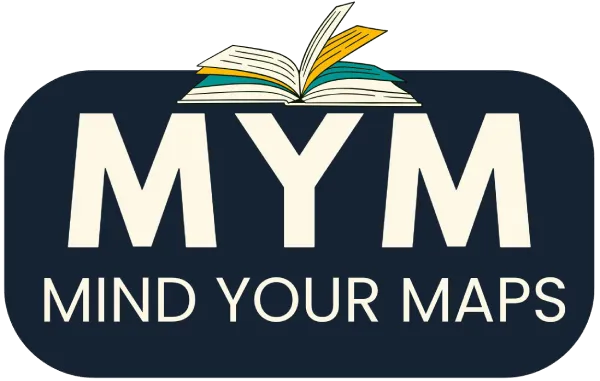Cracking the Code: Your Guide to Modern History with Mindyourmaps
Modern History can feel like a vast ocean, but for UPSC, PCS, and various State Civil Service Exams, it’s a crucial scoring section. At Mindyourmaps, we understand the challenges of navigating this subject. This blog will provide you with a structured approach to not just study, but truly master Modern Indian History.
Why Modern History Matters
Modern History forms the backbone of India’s journey to independence and the foundational principles of its modern state. Questions from this section are consistently high in number and often analytical, testing not just your knowledge of facts but also your understanding of cause-and-effect relationships and key historical movements.
The Mindyourmaps Approach: Your Blueprint for Success
Our philosophy at Mindyourmaps is about smart, efficient, and effective learning. For Modern History, this translates into a multi-pronged strategy
Understand the Syllabus and Previous Year Papers
Before you even open a book, dedicate time to understanding the syllabus for your specific exam (UPSC, PCS, or State Civil Services). Notice the recurring themes and the weightage given to different periods.
- UPSC: Focus on the period from the mid-18th century to the present, with a strong emphasis on the freedom struggle.
- PCS/State Exams: While the freedom struggle remains central, these exams might also delve into regional movements and personalities.
Once you have a grip on the syllabus, analyze at least the last 5-7 years of previous year question papers. This is your most valuable resource! It will reveal:
- Hot Topics: Which areas are repeatedly asked? (e.g., Rise of Indian Nationalism, Gandhian Era, Social and Religious Reform Movements).
- Question Patterns: Are questions factual, analytical, or chronology-based?
- Difficulty Level: This helps you gauge the depth of study required.
Build a Strong Foundation: Essential Books
Don’t overwhelm yourself with too many books. Stick to a few, thoroughly read them, and revise them multiple times.
- Spectrum (A Brief History of Modern India by Rajiv Ahir): This is often considered the Bible for Modern Indian History. Its concise yet comprehensive nature makes it ideal for quick revisions and covering a broad spectrum of topics.
- NCERTs (Class 8, 10, 12 – Old and New): Don’t skip these! NCERTs provide a foundational understanding and are excellent for building a strong conceptual base. The old NCERTs by Bipan Chandra are highly recommended for their in-depth analysis.
- India’s Struggle for Independence by Bipan Chandra: For a more detailed and analytical understanding of the freedom struggle, this book is invaluable, especially for UPSC aspirants.
Thematic Study and Chronological Approach
Instead of rote memorization, adopt a thematic and chronological approach.
- Thematic Study: Group similar events or movements together. For example, study all peasant movements, or all tribal uprisings, or all major educational developments in one go. This helps in understanding connections and differences.
- Chronological Framework: While studying thematically, always maintain a chronological framework. This helps in understanding the evolution of events and their impact on subsequent developments. Create timelines for major events, governor-generals, viceroys, and key acts.
Active Recall and Mind Mapping (Of course!)
Simply reading is not enough. You need to actively engage with the material.
- Note-Making: Create concise, point-wise notes. Focus on key facts, dates, personalities, and the significance of events.
- Mind Maps: This is where Mindyourmaps shines! Create visual mind maps for various topics. For instance, a mind map on the “Revolt of 1857” could branch out into causes, immediate triggers, key leaders, spread, reasons for failure, and impact. Visual representation aids memory and helps in connecting concepts.
- Active Recall: After reading a topic, close your book and try to recall everything you’ve learned. This strengthens memory retention.
- Flashcards: Use flashcards for important dates, names, and short definitions.
Practice, Practice, Practice!
No preparation is complete without ample practice.
- Solve MCQs: Regularly solve Multiple Choice Questions from various sources. This helps in identifying your weak areas and getting accustomed to the exam pattern.
- Attempt Previous Year Papers: Solve full-length previous year papers under timed conditions to simulate the actual exam environment.
- Writing Practice (for Mains): If you’re preparing for UPSC Mains or PCS Mains, regularly practice writing answers for analytical questions. Focus on structuring your answers, incorporating historical evidence, and presenting a coherent argument.
Key Areas to Focus On: A Modern History Checklist
- Advent of Europeans and Consolidation of British Rule: Early trading companies, Battle of Plassey, Battle of Buxar, Subsidiary Alliance, Doctrine of Lapse.
- Revolt of 1857: Causes, leaders, spread, consequences.
- Socio-Religious Reform Movements: Brahmo Samaj, Arya Samaj, Ramakrishna Mission, Aligarh Movement, prominent reformers.
- Rise of Indian Nationalism: Early political associations, Moderates and Extremists, Partition of Bengal, Swadeshi Movement.
- Gandhian Era: Non-Cooperation, Civil Disobedience, Quit India Movement, Round Table Conferences.
- Constitutional Developments: Various Acts (Regulating Act, Pitt’s India Act, Charter Acts, Government of India Acts 1909, 1919, 1935), Indian Independence Act.
- Post-Independence Consolidation: Integration of princely states, linguistic reorganization, initial challenges.
Modern History is not just a subject; it’s a narrative of India’s resilience and transformation. By adopting a strategic, disciplined, and smart approach – like the one advocated by Mindyourmaps – you can not only ace this section but also gain a deeper appreciation for our nation’s past. Stay consistent, stay positive, and keep mapping your way to success!
All the best for your preparations!



